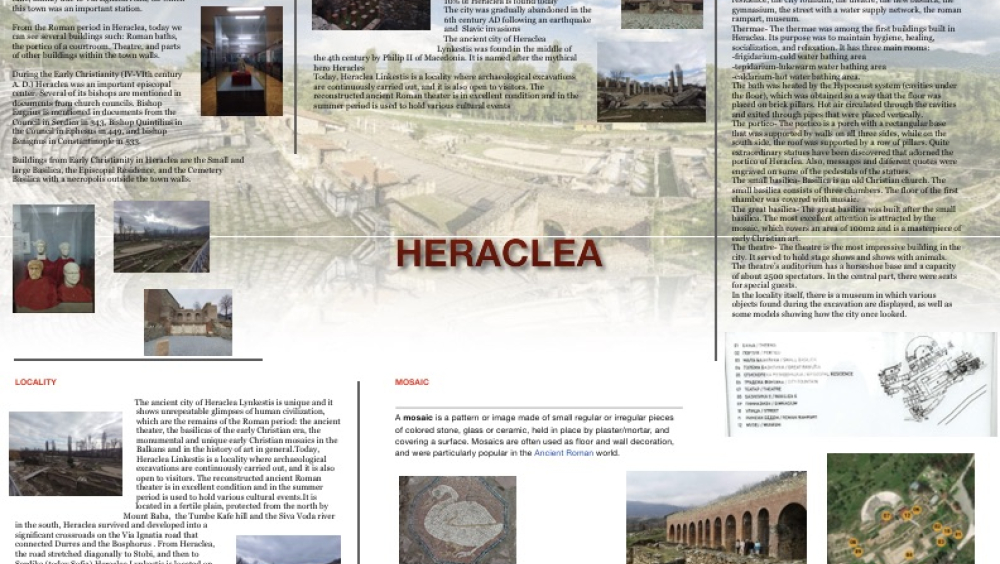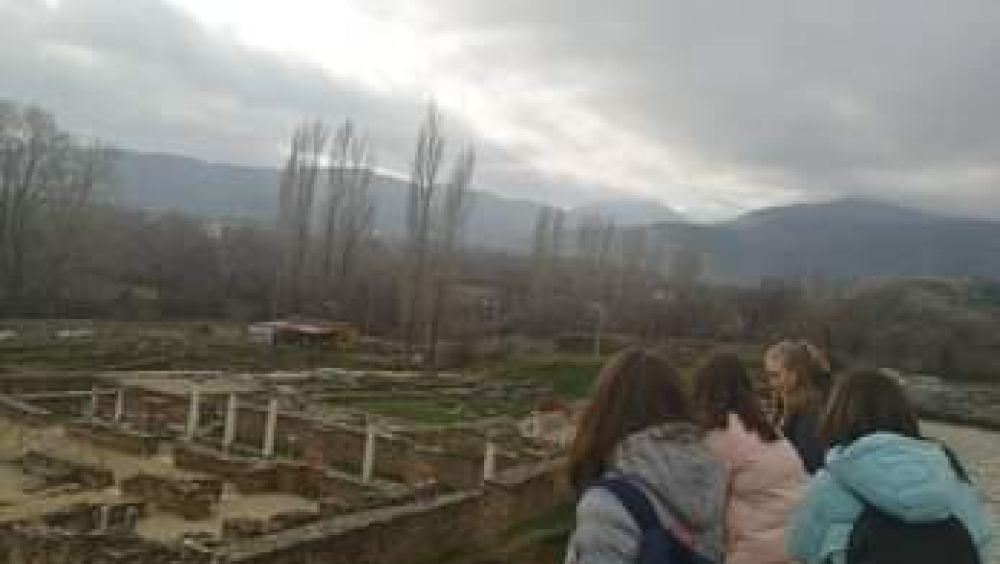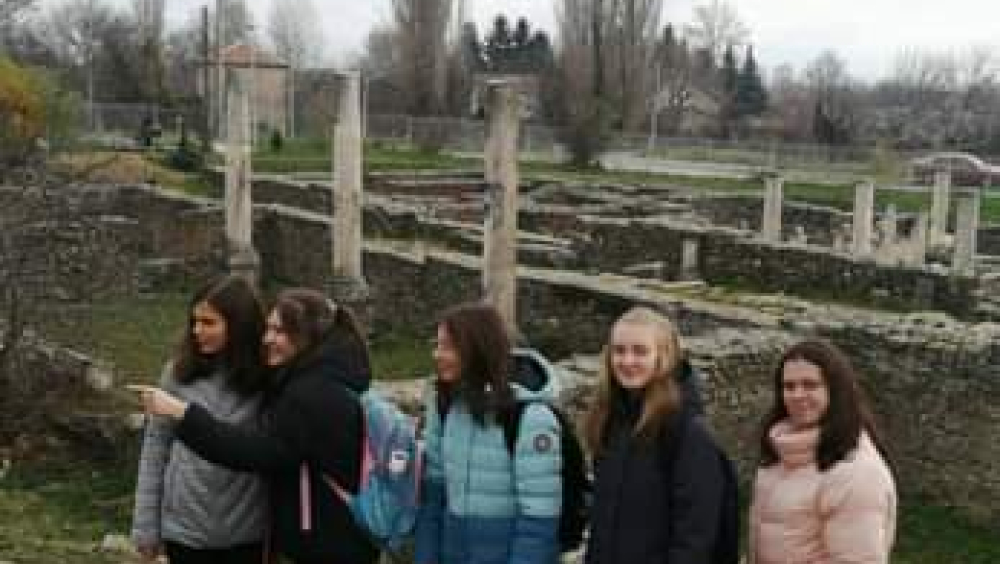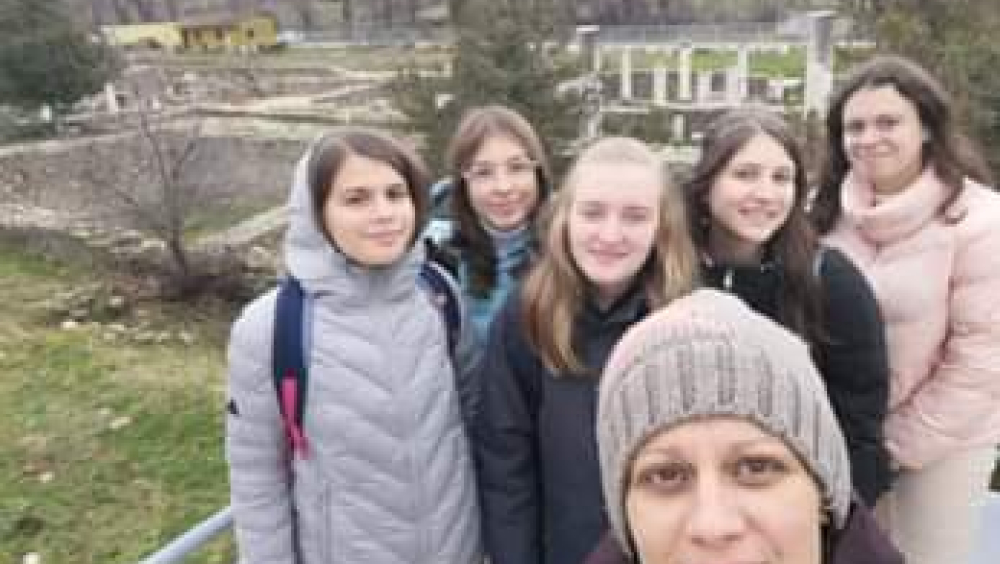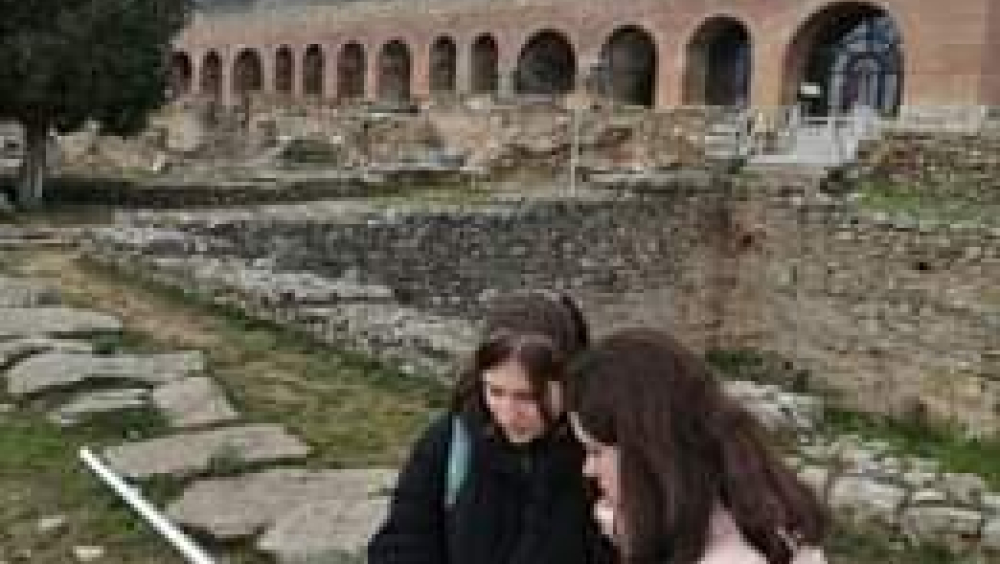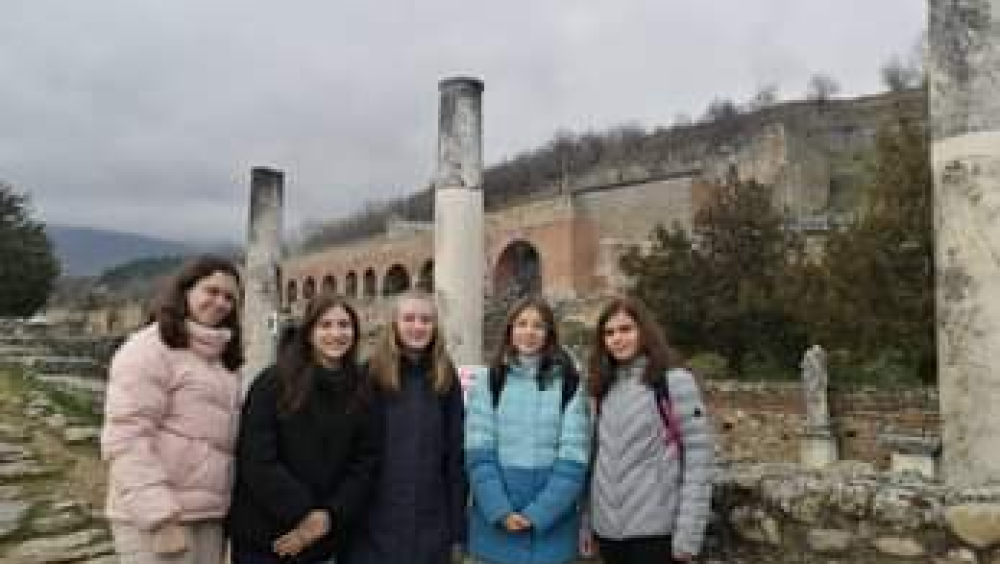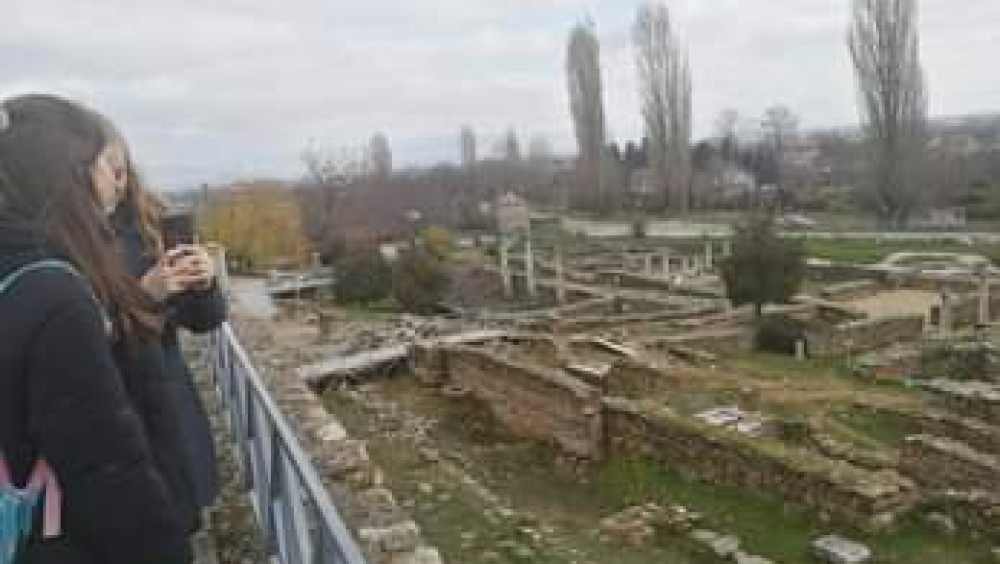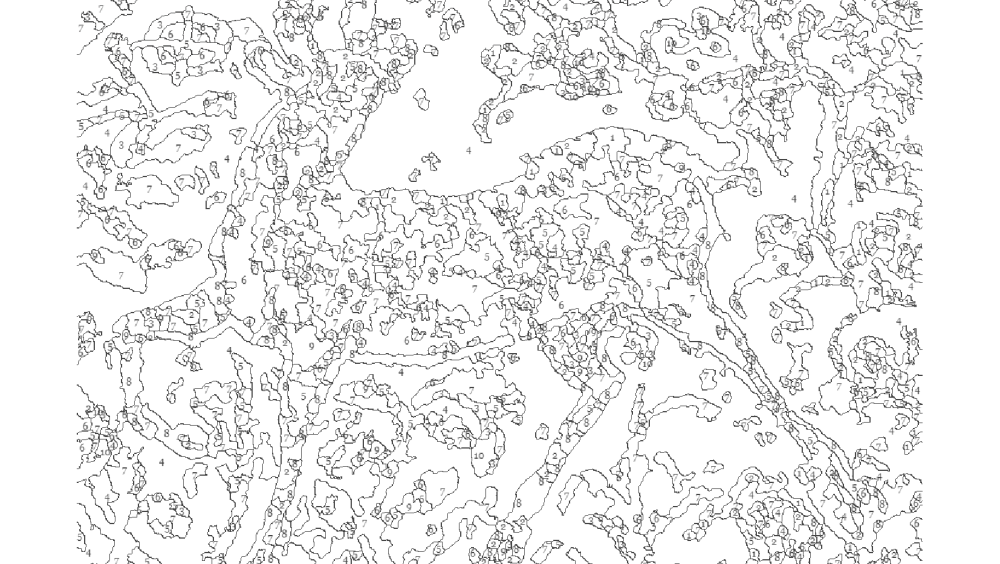EXPLORING HERACLEA-THE LOST CITY IN MACEDONIA
HISTORICAL DATA
In the middle of the II-nd century B. C. the Romans conquered Macedonia, destroying its political power, making it a province, disintegrated it into four districts. Heraclea which belonged to the fourth district, prospered a lot during this time, mainly due to Via Egnatia road, on which this town was an important station. From the Roman period in Heraclea, today we can see several buildings such: Roman baths, the portico of a courtroom, Theatre, and parts of other buildings within the town walls. During the Early Christianity (IV-VIth century A. D.) Heraclea was an important episcopal center. Several of its bishops are mentioned in documents from church councils. Bishop Eugrius is mentioned in documents from the Council in Serdica in 343, Bishop Quintilius in the Council in Ephesus in 449, and bishop Benignus in Constantinople in 533. Buildings from Early Christianity in Heraclea are the Small and large Basilica, the Episcopal Residence, and the Cemetery Basilica with a necropolis outside the town walls.
LOCATION
Today, Heraclea Linkestis is a locality where archaeological excavations are continuously carried out, and it is also open to visitors. The reconstructed ancient Roman theater is in excellent condition and in the summer period is used to hold various cultural events.It is located in a fertile plain, protected from the north by Mount Baba, the Tumbe Kafe hill and the Siva Voda river in the south, Heraclea survived and developed into a significant crossroads on the Via Ignatia road that connected Durres and the Bosphorus . From Heraclea, the road stretched diagonally to Stobi, and then to Serdika (today Sofia).Heraclea Lynkestis is located on the southern outskirts of the town of Bitola, at the foot of Mount Baba. The site lies about 2.5km south of the town centre, a 30 minute walk depending on where you start. The city’s main bus and train stations are no more than a 15 minute walk from Heraclea Lyncestis
HERACLEA TODAY
10% of Heraclea is found today The city was gradually abandoned in the 6th century AD following an earthquake and Slavic invasions The ancient city of Heraclea Lynkestis was found in the middle of the 4th century by Philip II of Macedonia. It is named after the mythical hero Heracles Today, Heraclea Linkestis is a locality where archaeological excavations are continuously carried out, and it is also open to visitors. The reconstructed ancient Roman theater is in excellent condition and in the summer period is used to hold various cultural events
MOSAIC
The mosaics were one of the most interesting things that we saw and learned about. A mosaic is a pattern or image made of small regular or irregular pieces of colored stone, glass or ceramic, held in place by plaster/mortar, and covering a surface. Mosaics are often used as floor and wall decoration, and were particularly popular in the Ancient Roman world. Fun activity that we made is called PAINTING BY NUMBERS
INTERESTING FACTS ABOUT THE CITY
Today, we see only 10% of what the city would look like. Heraclea consists of 12 separate buildings: thermae, the portico, the small basilica, the great basilica, the episcopal residence, the city fountain, the theatre, the new basilica, the gymnasium, the street with a water supply network, the roman rampart, museum.
Thermae- The thermae was among the first buildings built in Heraclea. Its purpose was to maintain hygiene, healing, socialization, and relaxation. It has three main rooms:
-frigidarium-cold water bathing area
-tepidarium-lukewarm water bathing area
-caldarium-hot water bathing area.
The bath was heated by the Hypocaust system (cavities under the floor), which was obtained so a way that the floor was placed on brick pillars. Hot air circulated through the cavities and exited through pipes that were placed vertically.
The portico- The portico is a porch with a rectangular base that was supported by walls on all three sides, while on the south side, the roof was supported by a row of pillars. Quite extraordinary statues have been discovered that adorned the portico of Heraclea. Also, messages and different quotes were engraved on some of the pedestals of the statues.
The small basilica- Basilica is an old Christian church. The small basilica consists of three chambers. The floor of the first chamber was covered with mosaic. The great basilica-
The great basilica was built after the small basilica. The most excellent attention is attracted by the mosaic, which covers an area of 100m2 and is a masterpiece of early Christian art.
The theatre- The theatre is the most impressive building in the city. It served to hold stage shows and shows with animals. The theatre’s auditorium has a horseshoe base and a capacity of about 2500 spectators. In the central part, there were seats for special guests. In the locality itself, there is a museum in which various objects found during the excavation are displayed, as well as some models showing how the city once looked.
